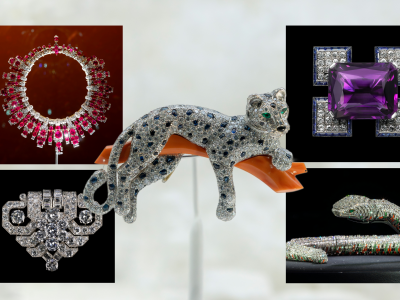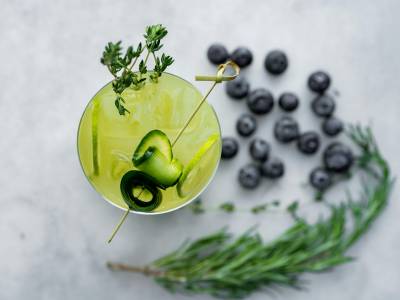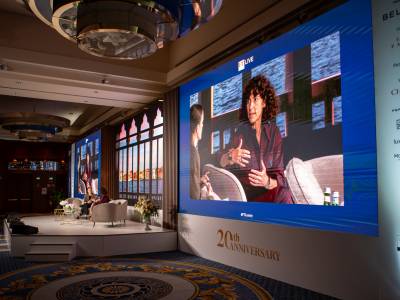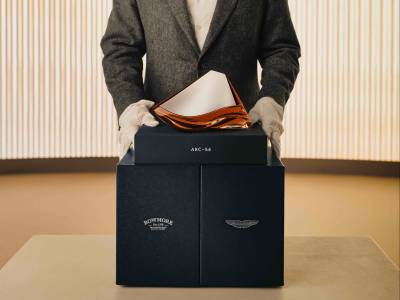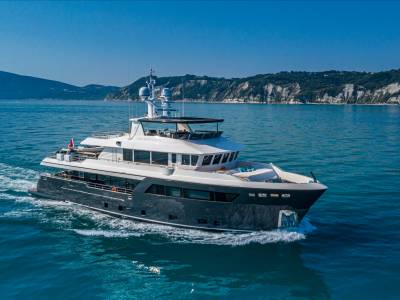Wave goodbye to the granny annexe and games room and say hello to yoga studios and living walls. Our growing eco consciousness, health awareness and love of high-tech gadgets are changing the way we live — and, in turn, how we design our homes. So what does the ultimate luxury home of the 2020s look like?
Design of the times: The top interiors trends of 2020
22nd April 2020
With the majority of us now spending more time at home than ever before, there’s never been a better opportunity to spruce up your space with these on-point looks
Work
In the UK, it was predicted that more than half of the workforce will be home-based in 2020, according to the Office for National Statistics - a figure that turned out to be eerily prescient, if not understated, given the current COVID-19 situation. Regardless, luxury schemes are latching on to the trend, ensuring the humble study is gaining in prominence. No longer consigned to garden studios, they are being brought back into the home and put on view, as at Regent’s Crescent in Marylebone — whose 67 apartments priced from £2.9m through Knight Frank and Savills sit in a Grade I-listed stucco terrace designed by John Nash in 1820.
“Many ultra-high-net-worth clients need a workspace at home, but not with traditional desks and computer stations,” says Helen Westlake, creative director at Millier, interior designers at Regent’s Crescent. Today’s studies are also showcases for art and other collectibles. “The study now often features bespoke integrated joinery for displaying personal items, layered lighting and seating to suit various functions, whether relaxing or working.”
Lauren Atkins, managing director of boutique developers and property company The Malins Group agrees: “Functional, tech-heavy spaces will be overtaken by spaces with a clubbable, library aesthetic — leather over linen.”
“In many of our super-prime projects, the study is found close to the hub of the home to facilitate an open and practical ‘working from home’ scenario,” says Steve Howat, co-founder of London Projects. “Being more prominent means people are selecting interesting pieces of furniture, art and collectibles in the space.”
Wellness
Despite the wow factor they provide, “the fad for indoor pools is on the decline”, says Marc Schneiderman, director of the prime London estate agency, Arlington Residential. “High-end buyers are requesting that properties do not have them. They are rarely used, expensive to maintain and the lower floor can feel damp.”
Soulless subterranean gyms no longer cut the mustard either. “Clients now have more tailored and complicated health, fitness and wellness requirements and would rather enjoy the social interaction of classes,” says Camilla Dell of Black Brick buying agency.
Social work-out spaces at home are also a popular feature. “People want a place they can invite friends and train or do yoga together,” says Nick Stuttard, Howat’s co-founder at London Projects, which recently included “state-of-the-art yoga studios, big enough to accommodate groups” in the refurbishment of two townhouses.
“At-home fitness is also becoming more accessible through technology, offering the studio experience from the comfort of one’s home,” says Georgia Siri, UK sales director at Battersea Power Station. The penthouses at Circus West, part of Battersea Power Station, feature in-apartment spas that include private saunas, massage areas and gyms.
Wellness means winding down too, and that’s increasingly desirable in a sauna pod — usually installed in the bathroom. The latest models, such as those by Klafs at Guncast, come with tailored light, music and even temperature-resistant LCD screens.
Master suites
Super-sized master suites are consuming more square footage than ever. In the new-build, four-bed townhouse at The W1 London on Marylebone High Street, priced £9.95m through Knight Frank, the 650sq ft master suite — set around a three-storey central glass atrium — occupies the whole first floor, including a huge dressing room and living room.
“They are the modern-day equivalent of an isolation space, where the outside world is kept completely at bay and entry is by invitation only,” comments Rosy Khalastchy from Beauchamp Estates.
“The bigger the better — with his and hers bathrooms and dressing rooms, a study, sitting room, small kitchen, a panic room and even a snoring room,” adds Private View Property’s Nicholas Brown.
However, it’s not just the masters of the house who want to cocoon themselves in such luxuriously extensive private quarters. “We’re witnessing an increase in the desire for all bedrooms in the house to benefit from an en-suite and a powder room for visitors and guests. Hotel-style living is becoming increasingly favourable,” comments Simon Burgoyne, head of Knight Frank Mayfair.
Master suites are now the modern-day equivalent of an isolation space, where the world is kept at bay and entry is by invitation only
Inspired by one couple who requested a master bedroom suite on the ground floor, to be designed in the style of classical Italian houses, Octagon Bespoke has replicated the idea for other clients.
“The suite was tucked away, with a grand reception room, two walk-in wardrobes, a large bathroom and bedroom, all opening up to a private area of garden and the outdoor pool,” says John Pope, director at Octagon Bespoke. “It gave the client and her husband their own wing and garden to enjoy when their guests were staying.”
Dining
In recent years, the dedicated dining room has been consumed by the all-encompassing family cooking, eating and living area. But a showpiece dining area starting to make a comeback in a different, more flamboyant incarnation — such as the table for 24 at the 18,500sq ft Highgate mansion, Heathfield House, currently on sale for £40m through Sotheby’s Realty.
“Dining rooms are seen as a status symbol of sorts, harking back to traditional living and grand historic homes. Where possible, we like to link the dining room to other entertaining spaces, opening out to a private garden or terrace,” says Millier’s Helen Westlake.
It’s all about broken-plan, not open-plan, now, with flexible spaces that can be partially divided. Crittal doors are a fashionable way to connect the dining room to the kitchen, “so it can be used formally or informally, kept separate or opened up when entertaining and more flowing space is needed”, says Steve Howat of London Projects.
Going green
The wealthy are becoming rather choosy about the air they breathe. Merlin Dormer, partner at Heaton & Partners buying agency, mentions a 6,000sq ft house with a built-in clean air system. “The owner had ensured all the air that came in was filtered and scrubbed. You see this sometimes with self-builds in the countryside, but not often in period central London. I suspect it will become more popular in 2020 given pollution and allergies — it’s certainly something buyers are picking up on,” he comments.
Living walls — which also improve air quality and stabilise humidity — are set to be big this year, predicts Richard Angel, co-founder of interior design studio Angel O’Donnell. “Moss walls, especially in home gyms and spas, help to reduce stress, improve productivity and lower your heating and cooling costs,” he says.
Look out for eco kitchens too, with pioneering tech to suit those of a plant-based persuasion. “They include harvest fresh fridges that preserve food for longer and smart gardens to grow fresh herbs and microgreens at home, cutting down waste and eliminating transport costs,” comments Jane Landino, design head at Taylor Howes. She also notes the growing use of natural textiles such as Piñatex — a leather substitute, made from pineapple fibres.
As our car habits change, garages are going out of fashion too. “Off-street parking is becoming less of a necessity. We recently acquired a £21m house in Notting Hill for an American family who didn’t require any parking — nor did the house come with any,” says Black Brick’s Dell. “Our clients now actively want to be more environmental with the way they travel around cities. They use travel and taxi apps, electric bicycles such as Lime and electric cars that can easily be parked on the street.”
Dining rooms are seen as a status symbol of sorts, harking back to traditional living and grand historic homes. We like to link them to other entertaining spaces, such as a private terrace
Making a statement
A bold Classic Blue is Pantone’s colour of 2020, taking over from the brave pinkiness of last year’s Living Coral. This sultry shade can already be seen on walls and furnishings everywhere, including the Haara chandelier by lighting specialists Cameron Design House.
Cameron also tips a trend that has found an unlikely new following, thanks to last summer’s cult Netflix hit, Blown Away. Yes, glassblowing has become cool — and no super-prime development in central London comes without a show-stopping, hand-blown glass chandelier or light installation, ideally dropping several stories down a statement stairwell. Cameron has some spectacular examples, including the Haara Metsa, whose cylindrical glass lanterns cascade down a 20m spiral staircase, and Kuulas, with each pearl suspended from gold-plated chains. .







